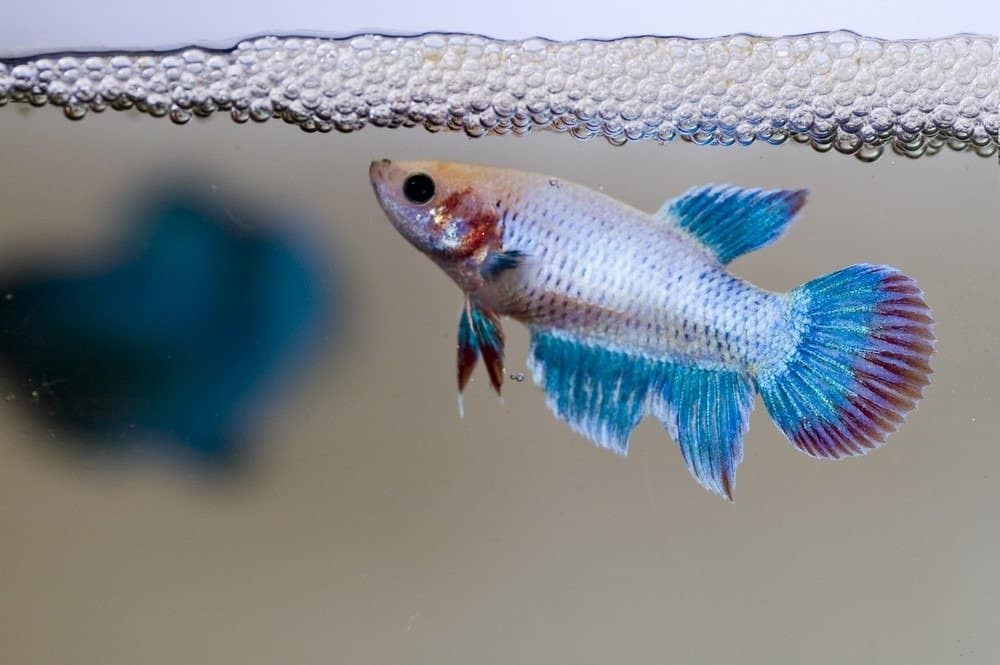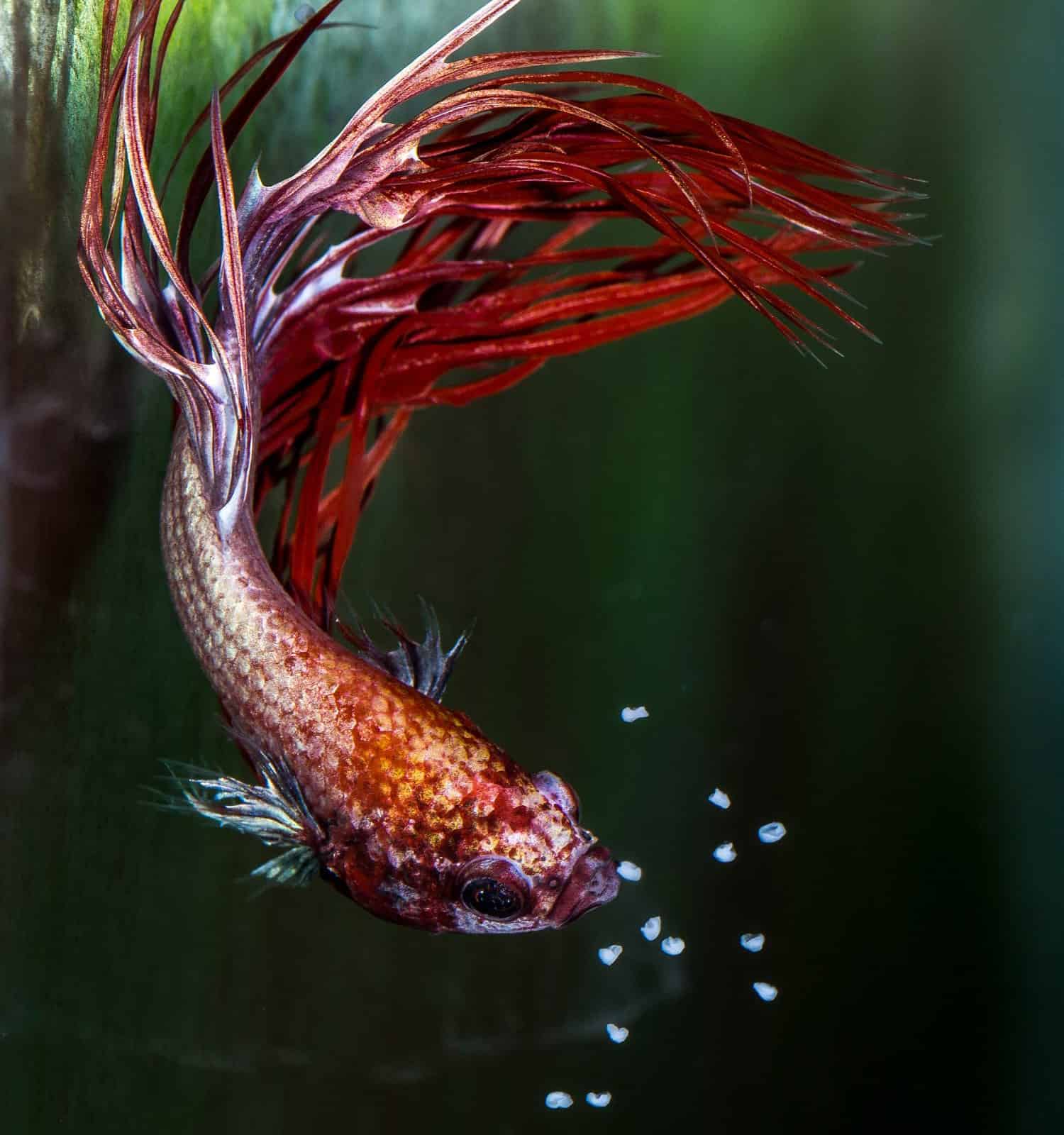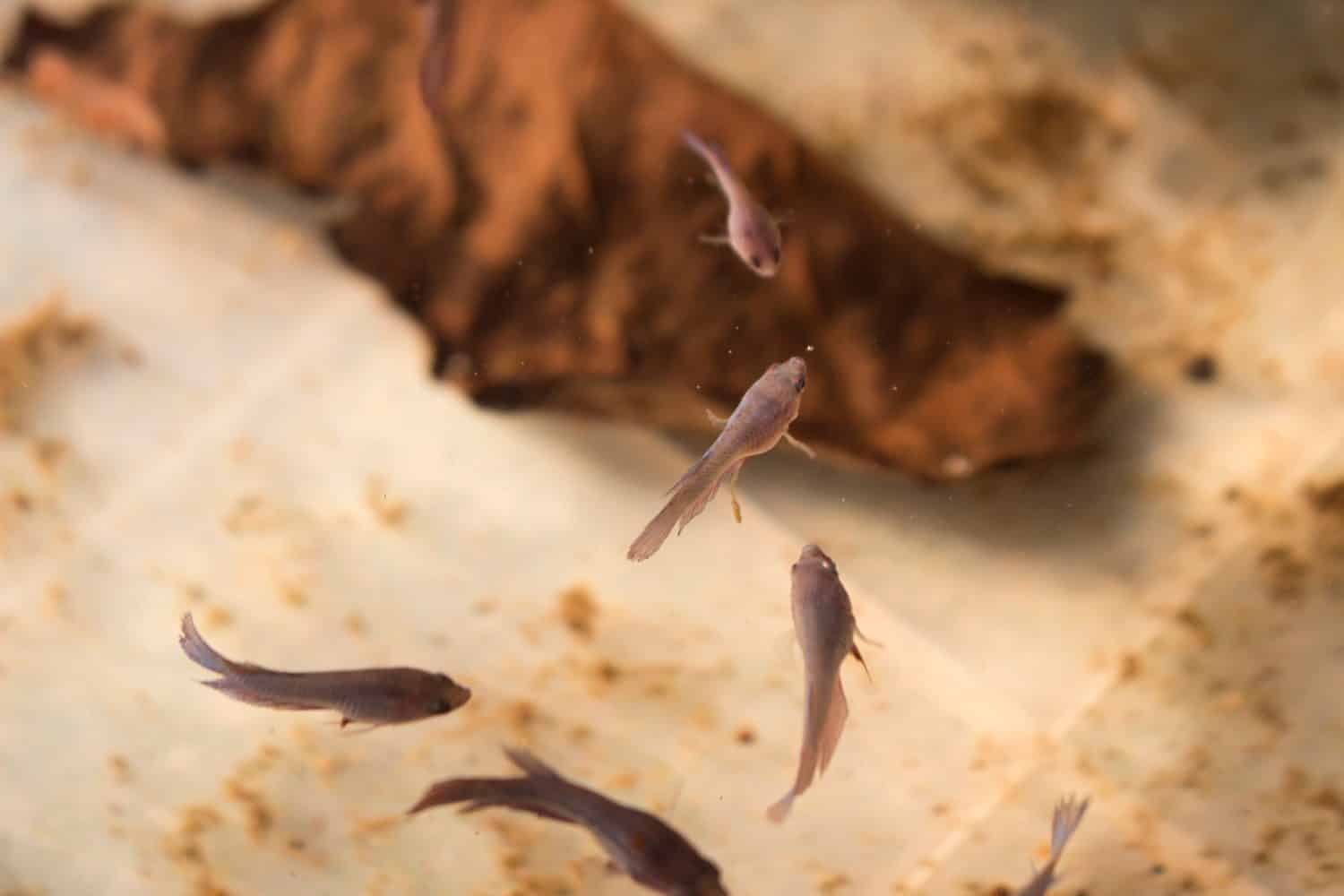Did you know that the betta fish was domesticated over 1,000 years ago? Known as Siamese fighting fish (Betta splendens) in the wild, these fun fish originally come from Southeast Asia, where they live in shallow freshwater marshes, paddy fields, and floodplains. Today, domestic betta fish are some of the most popular aquarium pets due to their vibrant colors, lively personalities, and low-maintenance care. Curious about a betta’s lifecycle? Let’s explore the development of betta fish eggs, how long they take to hatch, and how many little fry you can expect!
How Many Eggs Do Betta Fish Lay?

Bettas make their nests with a multitude of tiny air bubbles.
©mnoor/Shutterstock.com
When a male betta is ready to mate, he will work tirelessly to meticulously construct a bubble nest for his future babies. He uses his unique labyrinth organ to suck in air from the surface and forms it into a bubble for his nest. Each betta bubble nest has its own unique appearance. Some have large, distinct bubbles, while others are made from hundreds of tiny bubbles that look more like foam. These bubbles will help to protect the bettas’ future fry and provide oxygen for the developing babies. If a female betta likes the male, she might assist with the nest, but overall it is primarily the male’s role.
During courtship, female bettas release 10 to 40 eggs at a time — and this can add up to over 500 eggs during a single spawn! Not every egg will be fertilized, but if they are healthy and hatch, there could be more than 300 baby bettas. When well cared for, around 80% of babies will make it to adulthood. But in the wild, the number of survivors is much lower.
Male betta fish are the primary caregivers when it comes to betta babies — they build the nest, secure the eggs, and watch over them until they hatch. In fact, after spawning, male bettas chase away their female partners so that they don’t eat the eggs! In rare instances, a female may attempt to help the male relocate the eggs, but most of the time they are really just trying to grab an eggy snack.
What Do Betta Fish Eggs Look Like?

Male bettas use their mouths to very carefully collect the eggs and place them in their bubble nests.
©Toxotes Hun-Gabor Horvath/Shutterstock.com
Once the female is gone, the male betta painstakingly picks up each sinking egg and carefully places them in his bubble nest. After all the eggs are in place, he stands guard over the nest. He protects the tiny eggs from predators and retrieves any eggs that fall from the nest. The male also blows new bubbles to repair the nest if needed.
Betta eggs are tiny and round, no bigger than just 1 millimeter! They are mostly clear, with a bit of yellowish yolk inside, making them look like shiny little translucent pearls. Once laid, the eggs incubate in the bubble nest for 24 to 72 hours (around three days). During this time egg cells divide several times as the baby fish begin to form.

If you look really close, you might see the baby bettas’ eyes and tails developing!
©SubAtomicScope/Shutterstock.com
When baby betta larvae hatch, they are incredibly tiny — only 0.1 inches long! Betta larvae are translucent and look like teeny tiny tadpoles. After hatching, the larvae remain in the safety of their father’s bubble nest for another two or three days. Here they can enjoy the oxygen from the bubbles and feast on the yolk from their egg.
How Fast Do Baby Bettas Grow?

Betta fry stay in the bubble nest for a few days to absorb the nutrients of their yolk sac.
©PRAPAPORN SONRACH/Shutterstock.com
Once the yolk is gone the tiny baby bettas (known as fry) leave the bubble nest and begin to freely swim. However, they don’t always get it right on the first try. Some babies may sink and struggle a bit as they learn to swim horizontally.
At first, the tiny fry are completely dependent on getting oxygen through their gills. After two to five weeks, however, their labyrinth organs (which allow bettas to take in atmospheric oxygen) have developed and they can take in air from the surface.
Betta babies are colorless until they are eight or nine weeks old. Even then, however, their colors may continue to change until they are four or five months old.

Bettas do not show their final colors until they are at least four or five months old.
©airdone/Shutterstock.com
Two-month-old betta babies typically measure around 1 to 1.5 inches long. At this point, you can also differentiate between male and female fish. The males also begin being aggressive toward one another.
Betta fish reach sexual maturity when they are around three to five months old. However, they won’t reach their fully grown size until they are at least seven months old (this is the age of the bettas you typically see at the pet store). Some bettas will continue growing throughout the rest of their lives.
The photo featured at the top of this post is © bobbyphotos/Shutterstock.com
Thank you for reading! Have some feedback for us? Contact the AZ Animals editorial team.






